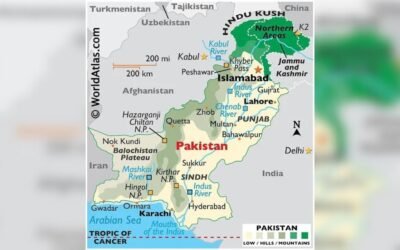In an age of political polarization and information overload, public policy think tanks are often viewed as islands of expertise. But how much influence do they truly hold today? Once considered the intellectual backbone of policymaking, think tanks are now operating in a fragmented media environment and under increased public scrutiny. From Washington to Islamabad, their roles and reach are being reassessed.
What Think Tanks Do and What They Don’t
At their core, think tanks are research institutions that produce policy recommendations on governance, economy, security, health, and climate. Some operate as advocacy groups with ideological leanings, while others maintain strict academic neutrality.
In the United States alone, there are over 2,000 think tanks. According to the University of Pennsylvania’s 2023 “Global Go To Think Tank Index,” the Brookings Institution, Chatham House, and the Carnegie Endowment for International Peace ranked among the most influential globally. These institutions frequently provide briefings to lawmakers, appear in the media, and publish peer-reviewed studies that guide decision-making.
You May Like To Read: IED Blast in Wana’s Rustam Abzar Area Targets Security Forces
But influence is not universal. Dr. Hafsa Zubairi, a political scientist at LUMS, explains:
“Think tanks often produce solid work, but whether it translates into actual policy depends entirely on political will and institutional openness. In fragile democracies or authoritarian systems, their role is much more limited.”
Funding Pressures and Questions of Independence
One of the biggest criticisms think tanks face is their dependence on funding from corporations, governments, and private donors. According to a 2024 report by Transparify, over 60% of major think tanks in developing countries do not disclose their full funding sources. This can raise questions about bias.
For instance, some Washington-based think tanks have received millions from defense contractors while promoting increased military spending. Meanwhile, others with climate policy portfolios have taken funding from fossil fuel giants. These relationships often blur the lines between research and lobbying.
In Pakistan, too, funding remains opaque. Institutions like SDPI (Sustainable Development Policy Institute) and PIDE (Pakistan Institute of Development Economics) are among the few that publicly disclose major grants, but they still face capacity limitations.
A former senior analyst at a Pakistan-based think tank, requesting anonymity, noted:
“Sometimes, we self-censor. You know which red lines not to cross if you want to keep your funding or avoid trouble.”
During the dialogue titled “Implementation of the SDGs in a Rapidly Changing Global Context”, organized by the Parliamentary Taskforce on SDGs under the leadership of its Convenor, Ms. Shaista Pervaiz, MNA, Special Secretary (SI) of the National Assembly, Syed Shamoon Hashmi,… pic.twitter.com/6AF96Lmu8l
— Committees of NA (@NA_Committees) August 6, 2025
Impact Varies by Region and Issue
Think tanks in developed democracies often shape policy agendas months or even years in advance of legislation. The Peterson Institute for International Economics influenced US trade policy debates, while the Urban Institute’s work has informed tax and housing policies.
But the effectiveness of think tanks is not just about publishing papers. It’s about access. In countries where policymakers engage with research, think tanks thrive. In Pakistan, for instance, institutions such as LEAD Pakistan and Tabadlab have gained visibility by framing the discourse around climate resilience and digital governance, respectively.
The sustainable development financing gap is now USD 4.2 trillion annually – and countries like Pakistan, managing both debt and climate pressures, have to carefully balance their priorities. 📉💸
— tabadlab (@tabadlab) August 2, 2025
In 2023, Tabadlab’s report on Pakistan’s digital public infrastructure was cited in a Senate Standing Committee on Information Technology meeting a rare instance of local research directly informing policy. However, such moments remain exceptions.
Table: Influence of Think Tanks in Selected Countries
| Country | No. of Think Tanks | Level of Policy Influence | Key Example |
| United States | 2,203 | High | Brookings Institution |
| United Kingdom | 321 | High | Chatham House |
| India | 509 | Medium to High | Observer Research Foundation (ORF) |
| Pakistan | 20–25 (active) | Low to Medium | SDPI, Tabadlab, PIDE |
| China | 435 | High (state-aligned) | CASS (State-affiliated) |
Can Think Tanks Stay Relevant?
To remain effective, think tanks must adapt to changing political landscapes and digital platforms. Many are now engaging directly with the public through podcasts, visual explainers, and social media briefings. Some have even started working in local languages to broaden accessibility.
But adapting isn’t just about visibility. It’s also about rigor. In 2024, the German Development Institute revised its internal quality controls following criticism of its methodology in one of its reports. Similar introspection is needed globally.
You May Like To Read: Why More Women Are Entering Politics—And Winning
In South Asia, a promising trend is the rise of issue-focused policy labs that work closely with civil society. The Centre for Economic Research in Pakistan (CERP), for instance, collaborates with provincial governments to test behavioral interventions in education and health. Their randomized controlled trials are gaining attention in international development circles.
Public policy think tanks are not obsolete, but they are under pressure. Their future depends on transparency, methodological strength, and the ability to engage beyond elite circles. In countries like Pakistan, improving institutional links between researchers and decision-makers remains a crucial task.
Policymaking is ultimately a political act, but without credible research, it’s also blind. Think tanks can still play a vital role if they remain independent, grounded, and connected to the societies they aim to serve.







